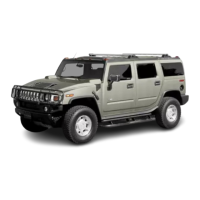If you have to leave your vehicle with the engine
running, be sure your vehicle is in PARK (P)
and the parking brake is firmly set before
you leave it. After you move the shift lever into
PARK (P), hold the regular brake pedal down.
Then, see if you can move the shift lever away
from PARK (P) without first pulling it toward you.
If you can, it means that the shift lever was
not fully locked into PARK (P).
Torque Lock
If you are parking on a hill and you do not shift your
vehicle into PARK (P) properly, the weight of the
vehicle may put too much force on the parking pawl
in the transmission. You may find it difficult to pull
the shift lever out of PARK (P). This is called torque
lock. To prevent torque lock, set the parking brake
and then shift into PARK (P) properly before you
leave the driver’s seat. To find out how, see
Shifting Into Park (P) on page 134.
When you are ready to drive, move the shift
lever out of PARK (P) before you release the
parking brake.
If torque lock does occur, you may need to have
another vehicle push yours a little uphill to
take some of the pressure from the parking pawl
in the transmission, so you can pull the shift
lever out of PARK (P).
Shifting Out of Park (P)
Your vehicle has an automatic transmission shift
lock control system. You have to fully apply
the regular brakes first and then press the shift
lever button before you can shift from PARK (P)
when the ignition is in RUN. See Automatic
Transmission Operation on page 124.
135

